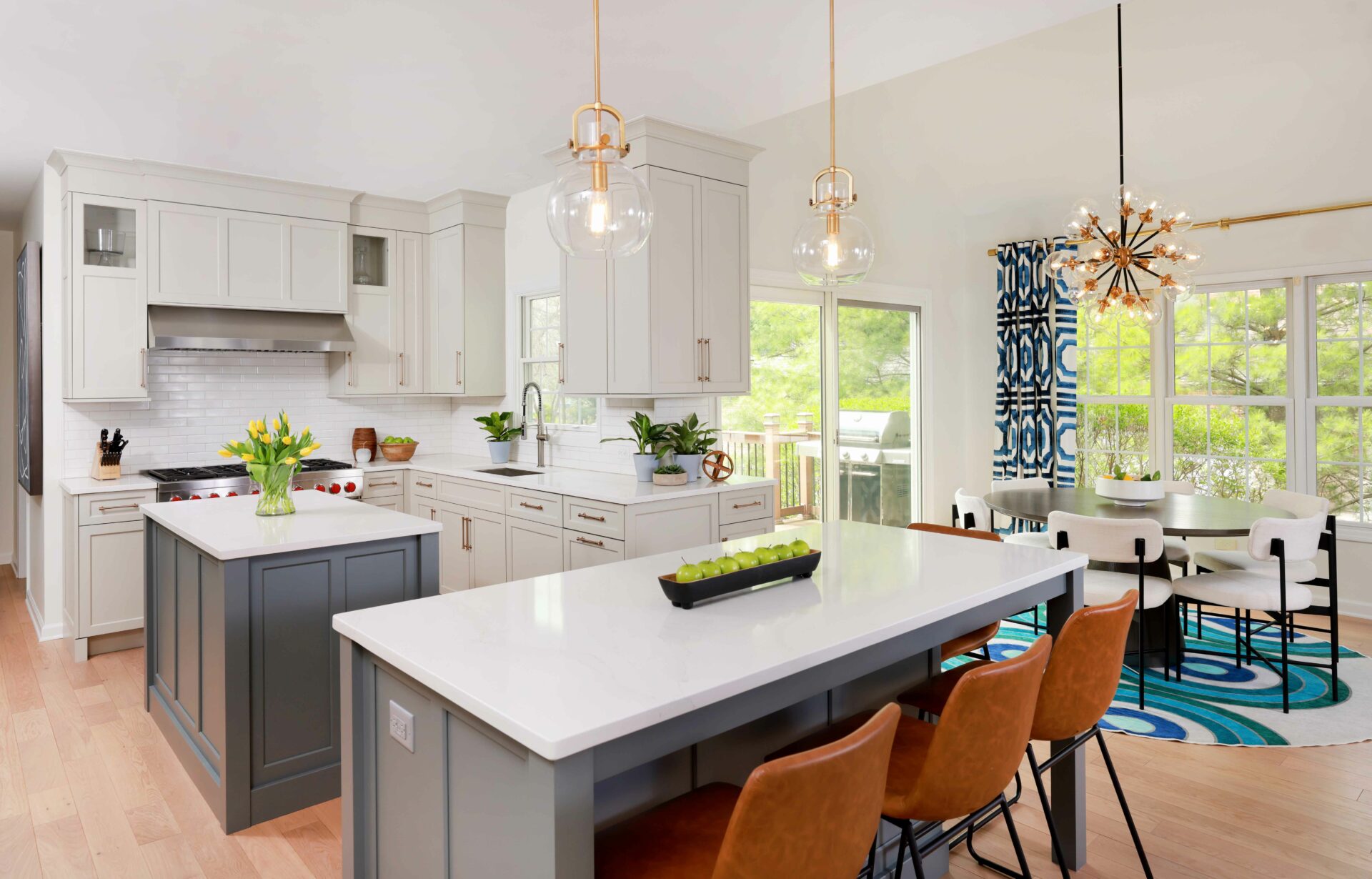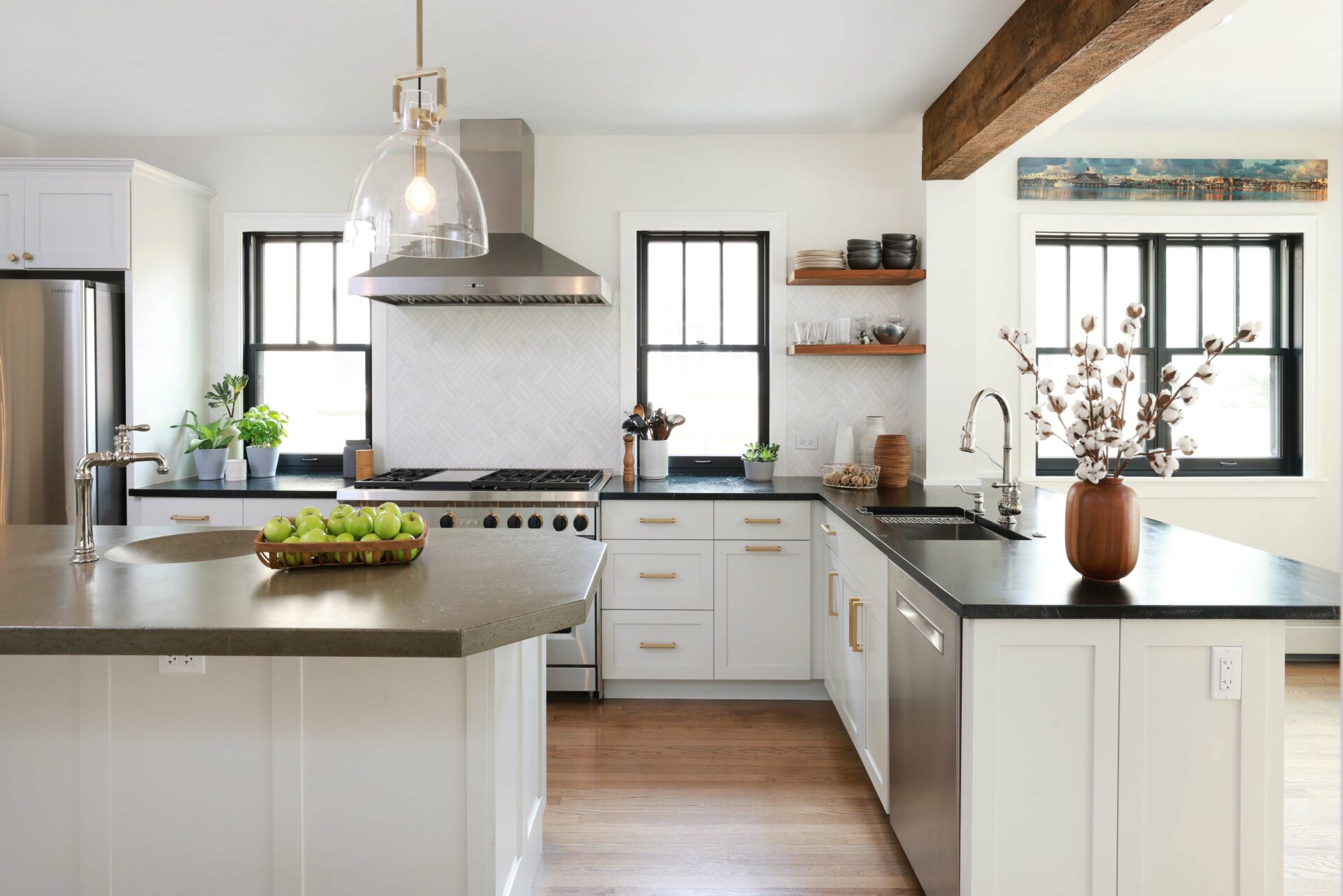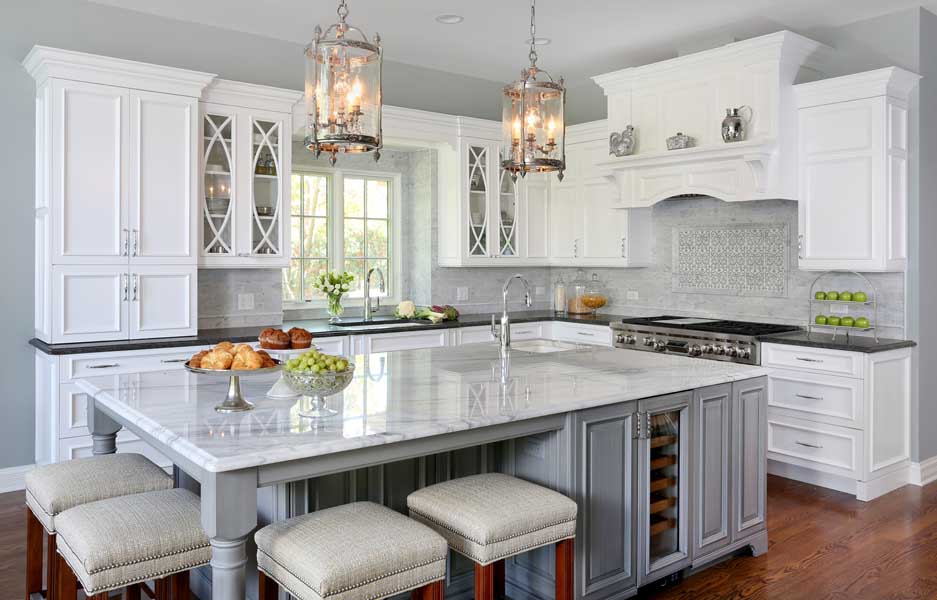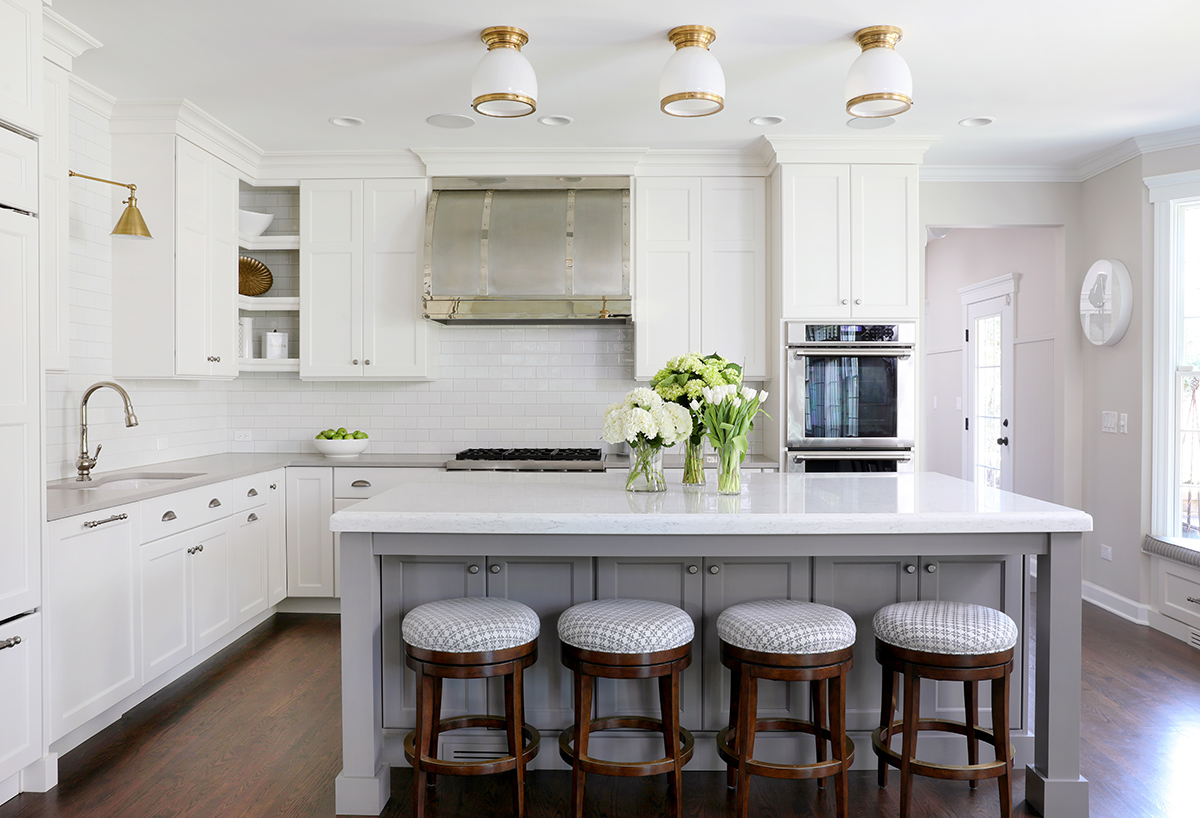When It Comes To Kitchen Islands, Bigger Isn’t Always Better

Normandy Designer Laura Barber, AKBD, once worked with a couple who did away with their baseball-diamond-shaped island during their kitchen remodel. “They couldn’t reach the middle of the island, so it turned into wasted space,” Laura says. “A kitchen island should have a function, and not just be large for the sake of being large.”
While bigger may seem better — especially if you want to seat the entire family, have a large cooking preparation area, and store your appliances out of sight — there are several things to consider.

The kind of material you choose can also factor into the maximum size of the island. If you would prefer to not have seams, you will want to choose a material that comes in large single slabs, such as granite and quartzite. Engineered stone is also available in jumbo slabs, though the selection is more limited. Marble tends to come in smaller slabs, so may require multiple pieces when using it for a larger island.

The verdict? Design smarter, not necessarily bigger. If you’d like to meet with one of our Designers to discuss your kitchen remodeling vision, set up a time to talk and they can skillfully guide you through the process. For more home remodeling inspiration and tips, follow us on Facebook, Instagram, LinkedIn and Pinterest.








